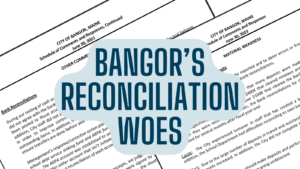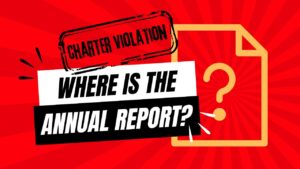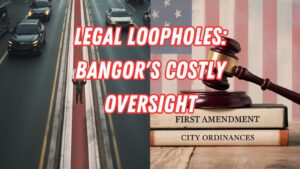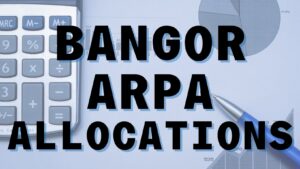
The city of Bangor makes an effort to put as many documents they can in their Document Search Center on their website. They’ve got orders, minutes, resolves, and other documents meant for public consumption spanning decades. There are gaps, certainly. But I believe anytime they come across more documents they find their way online.
This has made it easier for getting answers on why certain things in Bangor happened. There’s a flipside to that. Sometimes those documents raise more questions. Especially when you stumble across them while looking for something else. Rabbit holes open up regularly and I have to fight my ever curious brain from falling into them. For example, a passing statement about the 1991 and 1992 State Fair, as well as a lack of controls in place at Bass Park. Rabbit hole activated!
Where did we put those receipts?

In the Management Letter for Fiscal Year 1992, the firm Brantner Thibodeau & Associates reported under Bass Park the supporting documents for the 1991 & 1992 State Fair gate receipts and the Harness Racing admissions, program sales, and concessions had been discard or could not be located. It was noted at that time the City has since implemented procedures to avoid it happening again.
The next paragraph they cite receivables went unbilled and undetected for an extended period of time.
Taxpayers picked up the slack
Fast forward to the letter from Bangor’s latest auditing firm Runyon Kersteen Ouellette, and for Fiscal Year 1999 they point out the Bass Park fund is continuing to run a deficit and has been for years.

Are these issues related? What effect did the undetected and unbilled receivables have on the fund? Was the city of Bangor ever made whole? How much of those receivables had to be written off? Could the issues pointed out in 1992 indicate mismanagement? We don’t know. The auditor’s job isn’t to pass judgement. They’re hired to test the books, point out when they don’t add up, and make recommendations on proper accounting practices.
What we do know is the City pumped money into the fund from the annual budget. In short, taxpayers footed the bill. (Eventually the City did away with the City Nursing fund. Fiscal Year 2001 was the last Annual Report that included the fund.)
Maybe just a peek down the rabbit hole without falling in completely?
It happened 32 years ago. Even if you could get firm answers… to what end? It’s just one of those… head scratchers. Well, actually, maybe just a little peek at the city of Bangor’s Annual Report for Fiscal Year 1992. I’m curious what it had to say about the State Fair that year, if anything.
I didn’t find anything of interest about the State Fair, but I stumbled across this:

And down the rabbit hole I go. $181,892 in purchases, and $444,554 from various related parties, who were members of the City Council. Members of the City Council? Which ones? For what? How much each? And who was the end recipient if these were pass through reimbursements?

1991’s Annual Financial Report has higher figures, but no mention of City Council members specifically. I suspect this was just an oversight, since 1995’s report qualifies the statement with “who was a member of City Council” even though they had no amount to report.

1993’s Annual Financial Report mentions City Council members again.

1994’s Annual Financial Report does too.

1995’s Annual Financial Report had none, but still qualifies it with “who was a member of City Council.” 1996 and 1997 also had the statement, but no significant purchases. In 1998, they removed the paragraph completely. It has never appeared again since.
Transparent but not transparent enough
Transparency is crucial to keeping the public’s trust. With the Internet being the way of the world now and everything accessible online, the City could never get away with being so generic about something like this. Furthermore, something that was most likely above board and straight forward faces scrutiny instead.
- Which Councilors received the money for purchases?
- What was purchased?
- How did the bidding process go?
- Was City Council involved in the decision?
- If so, was there a recusal for conflict of interest?
- Which Councilor passed through the tipping fees?
- Who was the end recipient?
- What was the relationship?
- Again, how did the bidding process go? City Council involved? Recusals?
It’s been 30 years. I’m climbing out of the rabbit hole.
1994 was the last year the city of Bangor’s Annual Report showed related party transactions. While it would be nice to have answers to all of those questions, especially given the amount of money, what would we do with that information? Hopefully breathe a sigh of relief that it was all done fairly and properly.
Mysteries can lead to jumping to conclusions
I am not jumping to the conclusion that there was wrongdoing here. I only have questions. But because of the lack of complete transparency on what those transactions detailed, others will make that leap. And others have. There are many people in Bangor, Maine who already have a distrust for the way Bangor handles its finances. I don’t think there’s a person in Bangor who has lived in the city more than 5 years who hasn’t heard the phrase “good ol’ boys club” from someone else living in the city at least once.
The only public institution that should be serving up mysteries in Bangor is the Public Library. They have a whole section dedicated to them.






